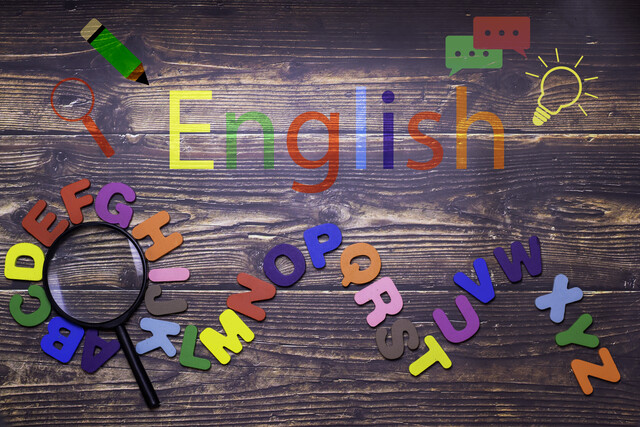ESL Basic Grammar
Master English Grammar: Build Strong Foundations Today!

6 Hours average completion time
0.6 CEUs
11 Lessons
18 Exams & Assignments
293 Discussions
11 Videos
110 Reference Files
125 Articles
Mobile Friendly
Last Updated December 2025
Mastering English: A Comprehensive Course to Grammar and Effective Writing
Language serves as a bridge, connecting diverse minds and facilitating the exchange of ideas. English, with its global reach, is an especially potent medium of this communication. However, to harness its full potential and express oneself with clarity and impact, one must grasp its intricate grammar and nuances. Welcome to our extensive course on English grammar and writing--an empowering journey that transcends basic rules and explores the art of effective communication.
Understanding the Significance of English Grammar:
In today's globalized world, English is more than just a language--it's a powerful tool that drives commerce, fuels diplomacy, and fosters cultural exchanges. According to recent data, over 1.5 billion people worldwide are learning English, a testament to its significance. Yet, despite its widespread use, many struggle with the foundational elements of English grammar, affecting their confidence and efficacy in both personal and professional settings.
But why is grammar so pivotal? Grammar is the mechanism that brings coherence to our thoughts, allowing us to convey complex ideas, emotions, and information with precision. It's the difference between being understood and being overlooked. In professional arenas, from corporate boardrooms to academic circles, proficient grammar can influence career trajectories, enabling job promotions, academic acclaim, and increased earning potential.
Course Offerings:
Our meticulously curated course caters to a diverse audience--from those for whom English is a second language, to native speakers aiming to refine their skills.
-
Introduction to ESL Grammar: Dive into the essence of English grammar, exploring its significance and foundational principles.
-
Nouns: Understand the role of nouns, their types, and their application in framing meaningful sentences.
-
Verbs: Delve into the dynamic world of verbs, their tenses, and their crucial function in denoting actions and states.
-
Using Pronouns Properly: Grasp the importance of pronouns in preventing repetition and ensuring sentence variety.
-
Using Prepositions: Learn about these vital linguistic connectors that lend context and clarity to sentences.
-
Conjunctions: Understand how conjunctions weave together ideas, enriching content and improving flow.
-
All About Adjectives and Adverbs: Dive deep into these descriptive tools, enhancing the vividness and specificity of communication.
-
Sentence Structure Know-How: Master the architecture of English sentences, ensuring clarity, coherence, and impact.
-
Writing Basics: Beyond individual components, understand the art of crafting compelling narratives, persuasive arguments, and impactful content.
-
Punctuation, Numbers, and Time: Navigate the subtleties of punctuation, ensuring precision, while also mastering the linguistic representation of numbers and time.
-
Write What You Mean and Mean What You Write: Imbibe the ethos of authentic and purposeful communication, a skill that elevates mere content to compelling prose.
Rather than viewing grammar as a rigid set of rules, we encourage students to see it as a toolkit--a means to shape ideas, share stories, and influence audiences. This course offers more than just knowledge; it promises transformation--a shift from apprehensive speakers to confident communicators.
Whether you're looking to elevate your academic essays, communicate more effectively in a global business environment, or simply gain a deeper appreciation for the English language, this course is your comprehensive guide.
Remember, English grammar isn't just about correctness; it's about clarity, credibility, and connection. Join us on this enlightening journey and redefine your relationship with the English language.
- Add depth with adjectives and adverbs
- Apply subject-verb agreement rules
- Communicate ideas with grammatical accuracy
- Understand prepositions for richer storytelling
- Master punctuation for precise expression
- Express complex ideas using conjunctions
- Strengthen authentic and purposeful communication
- Use nouns
- verbs
- and pronouns proficiently
- Effectively use numbers and represent time
- Craft clear and effective sentences
- Enhance writing with varied sentence structures
-

Basic Research Skills
-

ESL Basic Grammar and Writing
-

Writing Help Course Bundle
-

ESL Grammar Skills: Level 1-5 Course Bundle
-

How to Teach Reading Fundamentals
-

Critical Thinking Skills
-

Teaching Grammar to ESL Students
-

Basic English Speaking Skills
-

Understanding Learning Styles
-

Creative Thinking Skills
-

Math All-In-One (Arithmetic, Algebra, and Geometry Review)
-

ESL Basic Writing Skills
-

Typing and Keyboarding 101
-

Emotional Intelligence
-

Resume Writing
-

Speed Reading 101
-

Innovative Thinking Skills
-

Memory and Concentration Techniques
-

The Science and Art of Reading Development
-

ESL Grammar Skills Level 1